The Tour de France is so much more than a sporting event. It might just be the ultimate tourism ad for all the regions that it visits. Since most of the race takes place in France, it is not surprising that cheese is a big part of the food journey. Read on to discover our cheese lover’s guide to the Tour de France 2022.
In this post, we will give you a local artisanal cheese suggestion for each stage. And we’ve also got some great tips on how you can best enjoy them.
[Disclaimer: This post contains affiliate links. If you use these links to make a purchase, we may earn a commission (at no cost to you).]
SEE ALSO: The Cheese Wanker’s archives of Tour de France guides →
Discover France and its neighbours through the Tour de France
Without a doubt, the Tour de France (or Le Tour as the locals affectionately call it) is the ultimate sporting event where physical prowess meets strategy. In addition to the sporting side of things, the annual race truly shines a spotlight on all the regions that it goes through.
Every year, it inspires millions of viewers around the world to visit the beautiful cities and countryside of France and its neighbouring countries. And one of the biggest draw cards is the local history and food from each city, town and village.
Where Le Tour is going in 2022
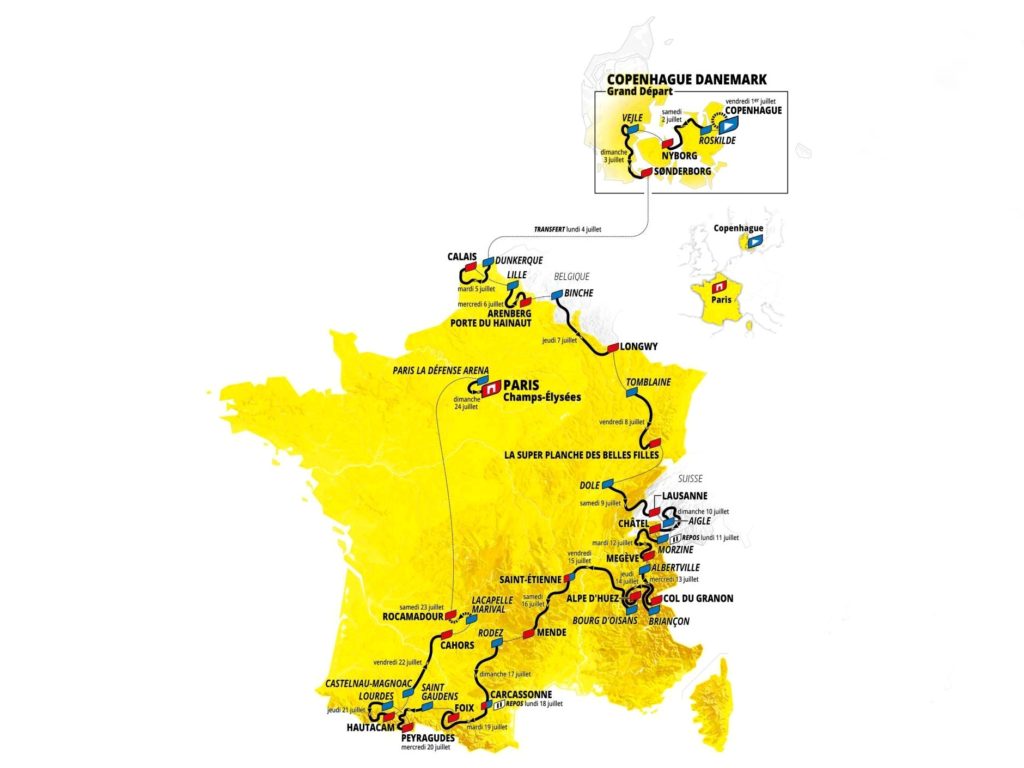
The actual route of the Tour de France changes from year to year. While the bulk of the racing takes place within the Héxagone, it is quite common for La Grande Boucle (the big loop) to visit some of the neighbouring countries. In fact, the 2022 edition will kick off in Denmark before entering France on Stage 4. Overall, the 21 stages will take us around France, spend one day in Belgium, two days in Switzerland and visit both the Alps and the Pyrenees. Finally, as always, it will end in Paris on the Champs-Élysées.
For our cheese lover’s guide to the Tour de France, we will give you a local cheese for each stage. Most of them you should be able to purchase in North America and Australia. However, for some of the smaller batch cheeses, you might just have to visit the area yourself to discover them. So, let’s talk cheese!
Stage 1 – Copenhagen > Copenhagen
Havarti
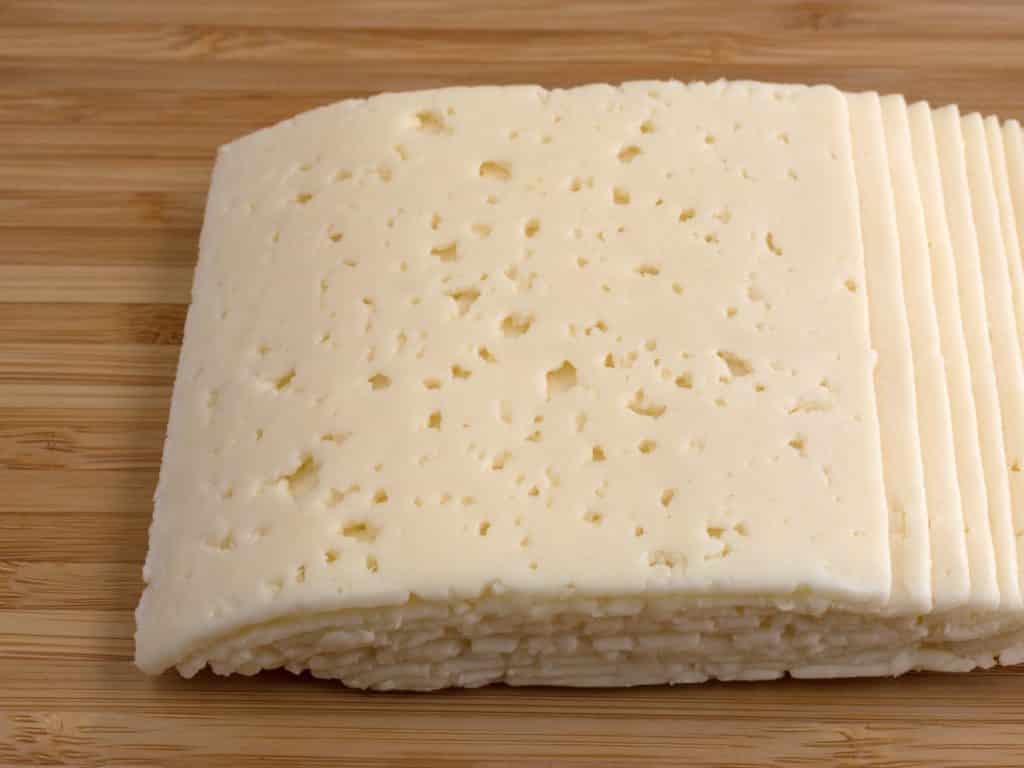
Danish cheeses don’t get much more famous than Havarti. Native to Denmark, Havarti was invented in the mid-1800’s by Hanne Nielsen, who named it after her farm, Havartigaard. This semi-hard cow’s milk cheese quickly rose to prominence and became a staple in Danish cuisine.
Renowned for its springy texture and subtle sweet and acidic flavour, Havarti is balanced and mild enough to suit most palates. As the cheese matures, its flavour develops to become slightly spicier with notes of hazelnut.
Overall, Havarti is a really versatile cheese. Since it was designed to be sliced, it is only natural that the locals love to eat it in sandwiches. Moreover, it pairs well with red apples, honey, pickled vegetables and a glass of red wine.
Stage 2 – Roskilde > Nyborg
Samsø
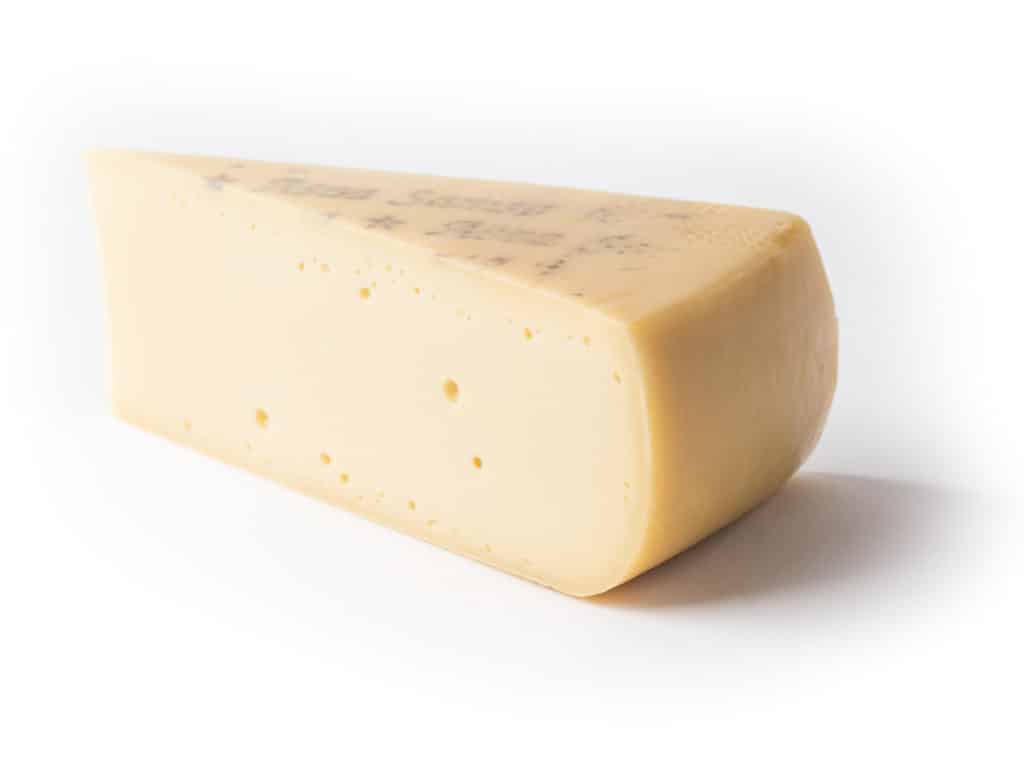
Second day in Denmark and we discover a hidden gem of a cheese. Samsø is a cow’s milk cheese that gets its name from the island of Samsø. It dates back to the late 19th century when the king of Denmark invited Swiss cheesemakers to teach farmers and locals the art of cheesemaking. After successfully making a cheese similar for Emmentaler, the Danish named it Samsø.
This pasteurised cow’s milk semi-hard cheese comes in large wheels similar to the Swiss cheese. Unsurprisingly, it also has an elastic texture with a spattering of tiny eyes throughout its paste. Most wheels have a gorgeous golden natural rind and a bright yellow interior. When young, Samsø is mild and nutty with some sweet and sour notes. As the cheese ages beyond 3 months, its flavour develops to become a bit more robust and sweet.
You can enjoy Samsø fresh as chunks or slices in a sandwich. However, just like Emmentaler, it really excels when melted in hearty dishes, or a grilled cheese sandwich.
Stage 3 – Vejle > Sønderborg
Danbo
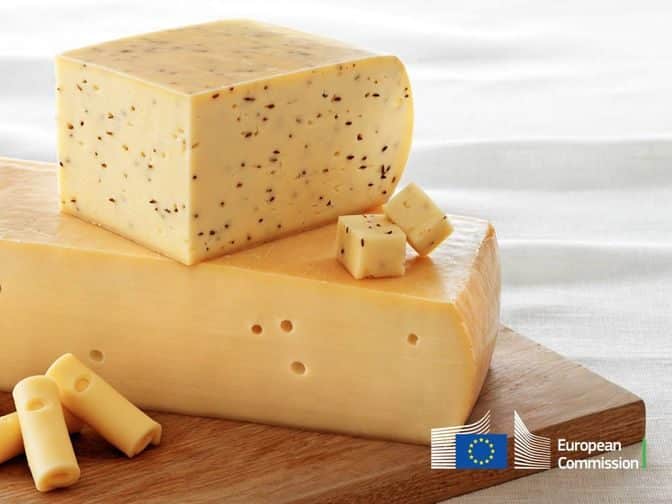
On stage 3, the tour spends a final day in Denmark. And our chosen cheese is one that is made in the region, very close to Vejle. Danbo is a semi-soft, matured and aged cheese made from cow’s milk. Actually, it is one of Denmark’s most popular cheeses. When caraway seeds are added to the cheese, it is known as “King Christian” cheese, named after King Christian IX, who ruled Denmark during the late 19th and early 20th centuries.
Danbo is made in a square shape and is matured for a minimum of four weeks. During maturation, the cheesemaker regularly washes the rind of the cheese to develop a distinct aroma. The cheese’s flavour ranges from mild to slightly acidic, with buttery and nutty notes. Some local cheesemakers mature their cheese for up to 12 months. At this age, the aroma becomes much more robust, as does the flavour.
While Danbo can be served as a table cheese, the locals most often slice it and enjoy it with crackers or in a rye sandwich with radish and red onions.
Stage 4 – Dunkerque > Calais
Maroilles
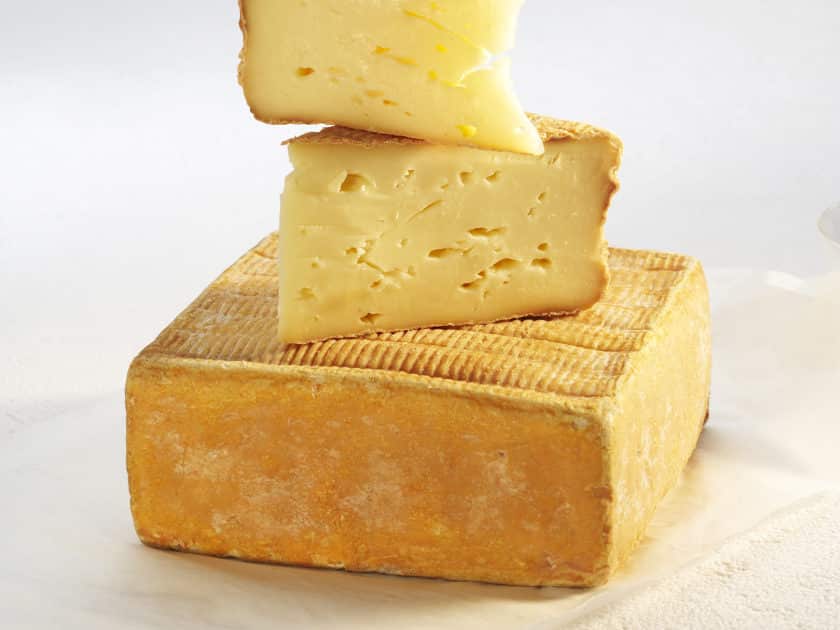
We are finally in France in the Nord department and the first French cheese we’ve got for you might just be one of the smelliest ones. Maroilles is a soft cow’s milk washed rind cheese that originates from the Hauts-de-France region. It gets its name from the village of Maroilles which is home to a small abbey where it was first made and matured.
Local cheesemakers mature square bricks of this cheese for up to four months. During this time, they regularly wash it with a brine solution. When young, Maroilles still has a chalky centre. However, as it ages, its texture gets softer and its aroma more potent. At four months, the cheese displays earthy notes of walnuts and mushrooms with a strong, pungent aroma.
Unsurprisingly, Maroilles is a great table cheese to be served after a meal. Besides, it pairs beautifully with a brown ale, French cider, brandy or even an aromatic Gewürztraminer.
COMPANION: Learn about the official history of the Tour as we enter France→
Stage 5 – Lille Métropole > Arenberg Porte du Hainaut
Mimolette
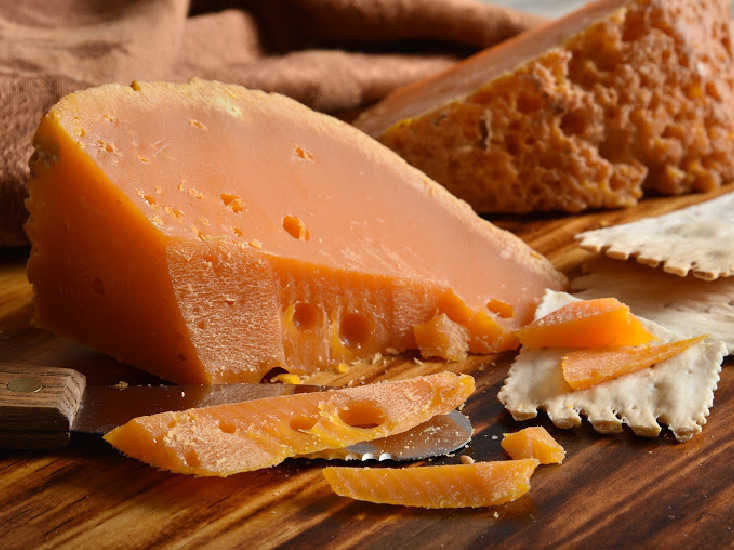
We continue our exploration of northern France in Lille. Here, we discover one of the region’s most popular exports, Mimolette. Actually, the Losfeld family drew their inspiration from the Dutch recipe for Edam when they first made this cheese. However, it differs from its Dutch counterparts in the use of annatto to impart its trademark bright orange colour.
Traditionally, cheesemakers release Mimolette for consumption at various stages of its maturation. A mature Mimolette has a distinctive greyish rind, which resembles the skin of a cantaloupe. Overall, it has a fruity aroma coupled with an incredibly complex flavour. Your palate will detect notes that oscillate between savoury and sweet caramel. Its texture is hard and crumbly but yet it still melts in your mouth.
Recently, it has become a modern-day tradition for Mimolette to be consumed at Halloween. The bright orange colour and shape of the cheese draw unavoidable comparisons to a pumpkin. Hence, it is not surprising that we are now seeing Jack-O’-Lanterns carved into entire wheels of this hard cheese. Enjoy Mimolette with a robust Stout or a glass of Cabernet Sauvignon.
Stage 6 – Binche > Longwy
Herve
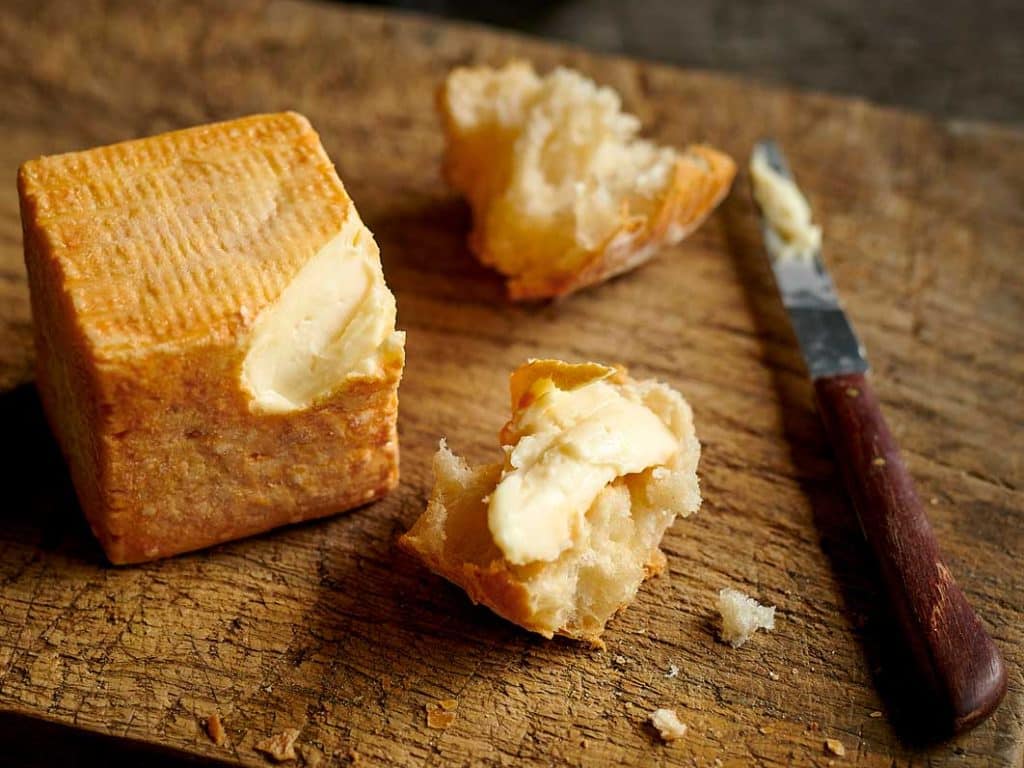
In 2022, the Tour will spend one day in Belgium. And the most famous cheese to come from this country might just be Herve. Herve is a soft washed rind cheese that is produced from raw or pasteurised cow’s milk. It gets its name from the ancient town of Herve, which is at the centre of Pays de Herve. This region is the geographical area of production and ripening of the cheese.
The most common version of this cheese is shaped as a small brick and has a glossy, sticky orange-brown rind. Its paste is mostly soft and with a slightly chalky centre. When young, Herve’s aroma is mild and its flavour sweet. As the cheese matures, its aroma becomes yeastier and it develops a spicier flavour profile.
Since it is fully flavoured, Herve is best enjoyed with dark bread and beers. Actually, It is one of the most popular cheeses in Belgium.
COMPANION: Learn more about Belgium’s most famous cyclist Eddy Merckx →
Stage 7 – Tomblaine > La Super Planche Des Belles Filles
Carré de l’Est
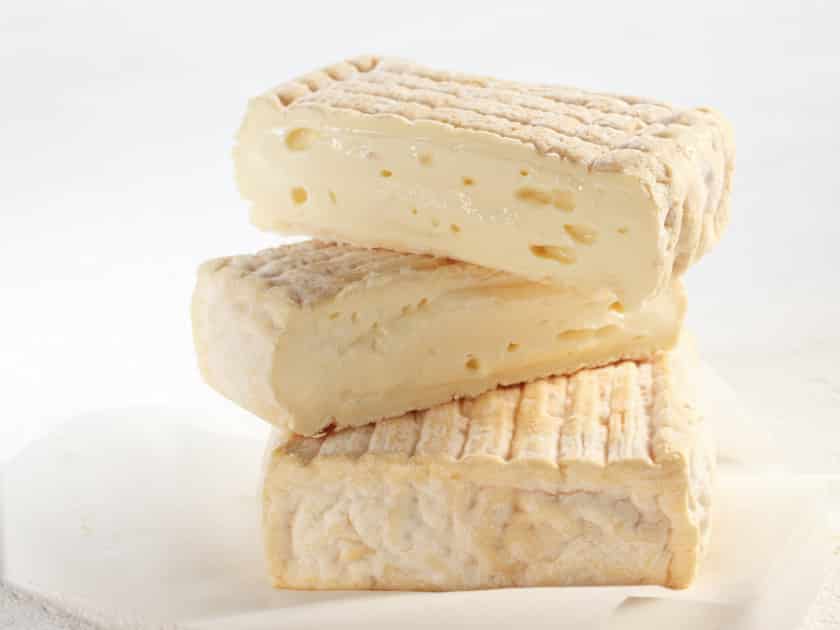
After a quick detour in Belgium, we’re back in France. Carré de l’Est is easily the least well-known cheese on our list and that is a real shame. This Square shaped soft cheese is made using pasteurised cow’s milk in the Vosges and Lorraine regions of eastern France.
Matured for about two weeks, Carré de l’Est develops a stunning wrinkly rind and a soft, yellow paste. Throughout the paste you will find the occasional eye. Overall, its aroma and flavour are quite mild and buttery, with the slightest earthy quality.
This delicate cheese is an excellent addition to any cheese board. In addition to this, it can be cut into small cubes and served in a fresh salad or on top of a quiche or gratin. As for wine pairings, a Pinot Noir from Alsace or a red from Arbois will not disappoint.
Stage 8 – Dole > Lausanne
Gruyère
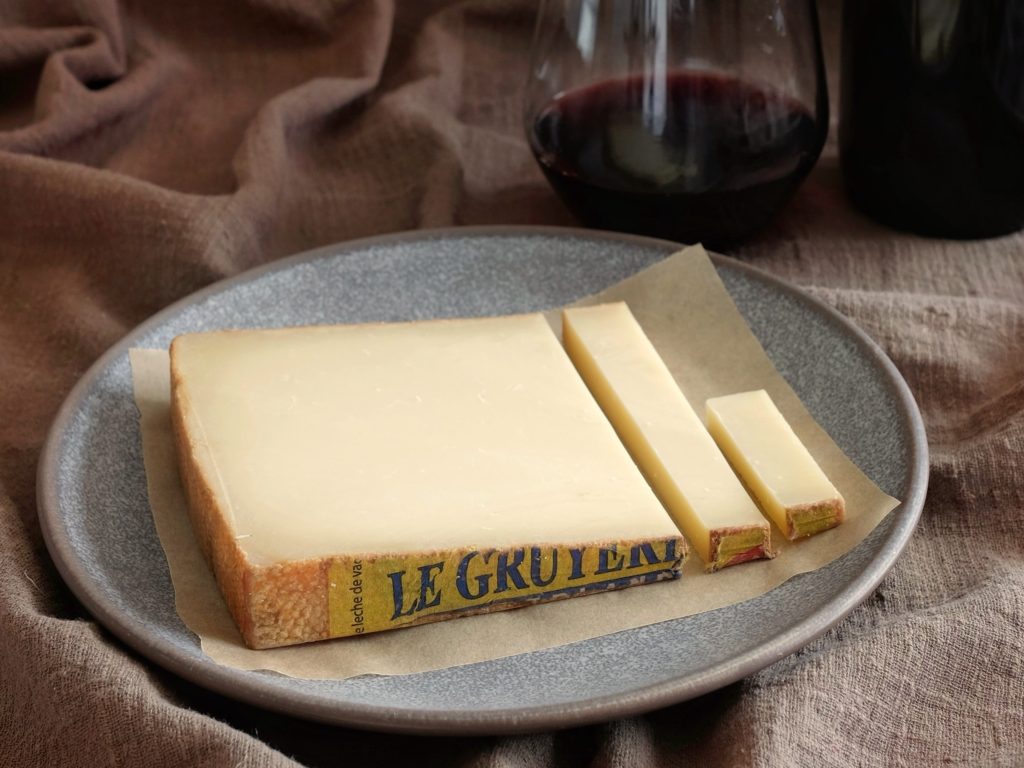
Stage 8 brings us to Switzerland and the coastline of Lake Geneva. Within an hour’s drive of Lausanne, you will find a tiny town called Gruyères. And yes, you’ve guessed it. This is the home of Switzerland’s most famous cheese, Gruyère. The origins of this semi-hard cheese date back to the early 12th century in the district of La Gruyère. To this day, local artisans in a select number of dairies make this cheese using local raw cow’s milk and traditional methods.
Between six and nine months of age, Gruyère has a soft and refined taste with sweet notes. From 10 months onwards, it is referred to as Réserve and has a full-flavoured and aromatic taste. Some wheels will be matured up to 18, or even 24 months for even more robust flavours.
Enjoy this famous Swiss cheese with a glass of Pinot Noir. It is also a spectacular melter and will excel in a cheese toastie. Having said that, my recommended way to enjoy Gruyère is in a traditional Swiss fondue called Moitié-Moitié where it is mixed with Vacherin Fribourgeois.
COMPANION: Fondue like a pro with this premium fondue set →
Stage 9 – Aigle > Châtel Les Portes Du Soleil
L’Etivaz
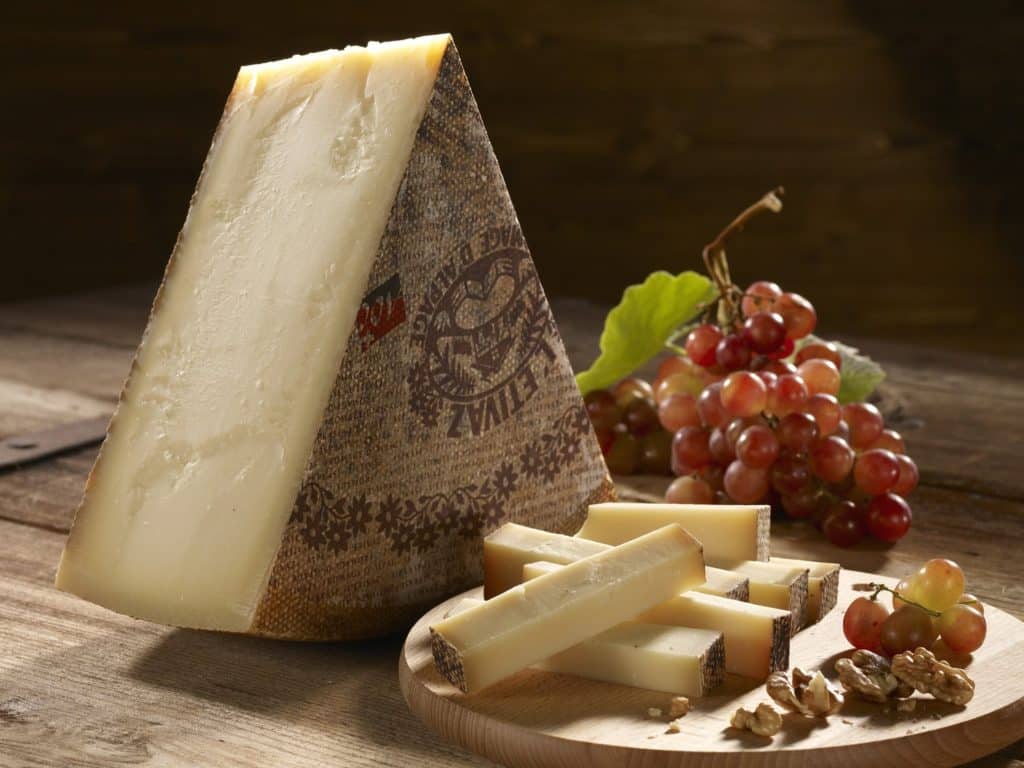
L’Etivaz is a seasonal hard cheese made using only unpasteurised cow’s milk. Currently, just over 100 alpine creameries in the Vaud Alps make this celebrated cheese from the months on May to October. To this day, they process the raw milk on site and use an open fire. In many ways, L’Etivaz is made as Gruyère was 100 years ago. Local farmers make this cheese only when the cows are doing their summer grazing in alpine pastures. Moreover, they still use traditional copper cauldrons over open wood fires.
L’Etivaz has a semi-hard texture with a fruity, slightly nutty flavour. Actually, its flavour varies significantly depending on the soil of the different pastures. It is yellow ivory in colour and slightly sticky due to its saltiness. It is aged for five to 13 months before it is eaten.
This incredibly complex Swiss cheese is an excellent addition to your cheese board. Pair it with a glass of Chardonnay, Chablis or a hard Cider.
Stage 10 – Morzine Les Portes Du Soleil > Megève
Chevrotin
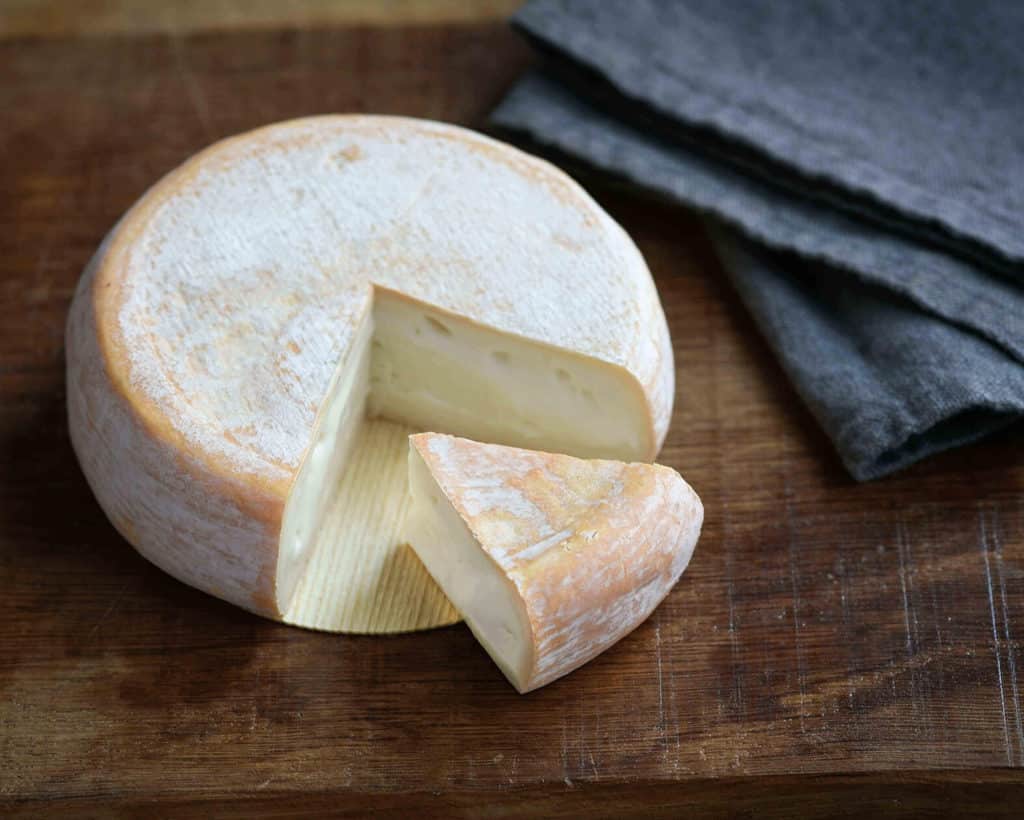
After a quick escape to Switzerland, the Tour de France returns to France for Stage 10. Continuing with the mountain theme, we find ourselves in the Savoie region. And one of the most famous cheeses from Savoie is Chevrotin. This delightful goat’s milk cheese is made using the raw milk of French Alpine goats and is a favourite among the locals.
Aged for a minimum of 21 days, Chevrotin looks like a small version of another famous cheese from Savoie, Reblochon. As a matter of fact, the main difference is that it is made using goat’s milk instead of cow’s milk. As a result, it is more aromatic and its flavour a slightly more pronounced with a certain “goaty” quality.
The ideal pairing for this beautiful cheese is a dry, fruity white wine from Savoie such as Chignin or Crépy.
Stage 11 – Albertville > Col Du Granon Serre Chevalier
Beaufort
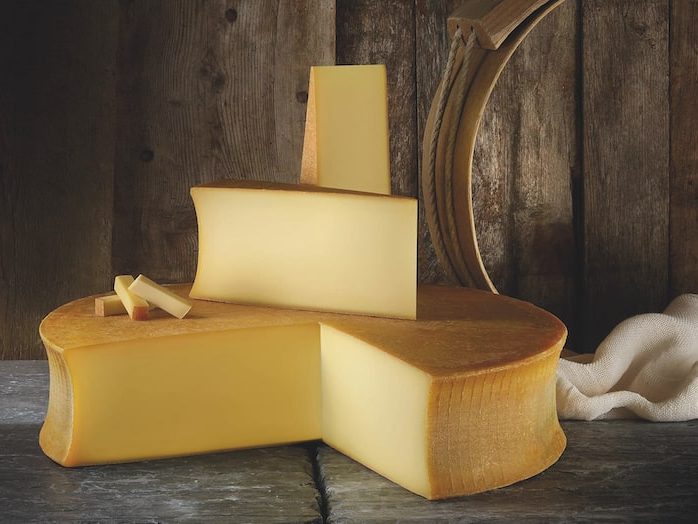
We start Stage 11 in Albertville, home of the 1992 Winter Olympics. And we’ve got a very fitting local cheese to match. Beaufort is a large format pressed cooked cheese. Unlike most of the local offerings, Beaufort is actually made with whole cow’s milk, instead of skimmed milk. Over the decades, its signature has become the concave natural rind that wraps around the cheese.
At five months of maturation, Beaufort displays an incredible range of aromas and flavours. You can expect meaty, sweet and buttery flavours as well as floral and herbal notes coming from the grass-fed cows’ milk. Look for a Beaufort d’Alpage to get the ultimate tasting experience. Indeed, this particular version of the cheese is only made during the summer months at a minimum altitude of 1500m.
Without a doubt, Beaufort is good enough to eat on its own as a table cheese. Having said that, it is also a great melting cheese and can be mixed with Emmental de Savoie and/or Comté to make a local dish called Fondue Savoyarde.
Stage 12 – Briançon > Alpe D’Huez
Bleu du Vercors-Sassenage
We’re well into the French Alps now and today’s cheese is a local blue cheese. Bleu du Vercors-Sassenage is quite a mouthful in many ways. This raw milk blue cheese is made using local cow’s milk in the Vercors massif as well as some other communes in the region. Unlike many of the other French AOP blue cheeses, Bleu du Vercors-Sassenage is very hard to track down outside of France.
This traditional blue cheese comes in a cylindrical format weighing between 4 and 4.5 kg. Its natural rind is light blueish-grey in colour with some orange patches. Moreover, its texture is surprisingly soft and moist, and will melt in your mouth. As for the flavour, you can expect sweet notes with a pleasant touch of bitterness. Watch out for some hazelnut in the finish.
Bleu du Vercors-Sassenage is best enjoyed with aperitifs or at the end of a meal, with a slice of walnut bread. Take things to the next level by melting this blue cheese in a sauce or in a Vercouline (similar to Raclette).
Stage 13 – Le Bourg D’Oisans > Saint-Étienne
Saint-Marcellin
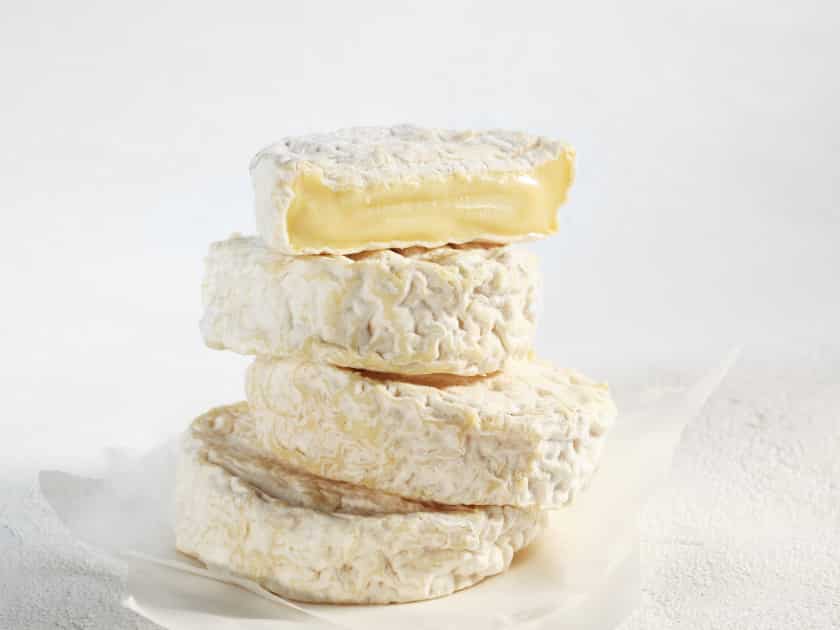
Stage 13 takes us very close to Lyon which is France’s third biggest city by population. Lyon was home to one of the country’s most famous gastronomes, Paul Bocuse. And one part of the legacy that Paul Bocuse has left us with is his support of a local soft cheese called Saint-Marcellin. Nowadays, this soft, small format cheese is made exclusively with cow’s milk.
Using a method of maturation called “affinage à la Lyonnaise”, local dairies have perfected the art of making this creamy, wrinkly beauty. At four weeks, Saint-Marcellin develops a delicate natural rind that can barely contain its insides. Hence, it is quite common for the cheese to be presented in a small ceramic dish called berceau.
While it is a great table cheese, Saint-Marcellin is most commonly used in cooking. In fact, it is an excellent addition to béchamel sauces and ravioli filling. Finally, it can also be enjoyed in a fresh garden salad.
Stage 14 – Saint-Étienne > Mende
Saint-Félicien
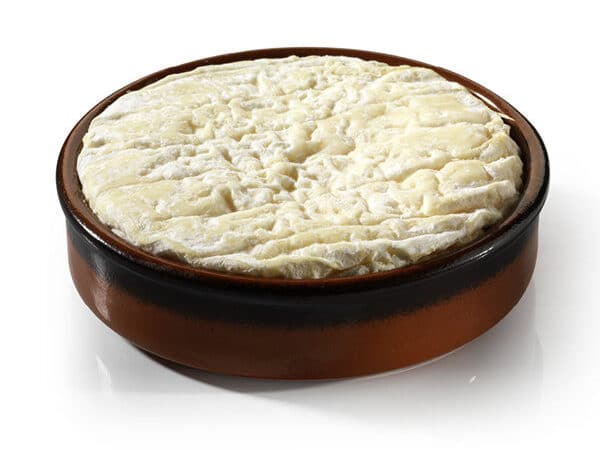
Next, we have Saint-Marcellin’s little brother, Saint-Félicien. As a matter of fact, a cheesemaker in Lyon in the 20th century invented this small cheese by drawing his inspiration from the older Saint-Marcellin. The main difference between the two is that Saint-Félicien is made using soft curds and the wheels are slightly larger.
At 14 days, the cheese develops a natural bloomy rind with patches of light blue. On the inside, its texture tends to be softer and creamier than its ancestor. Overall, its flavour is also slightly milder with nutty notes. As the cheese matures, its flavour and aroma get more pronounced. Even though it is made with cow’s milk, watch out for a subtle goaty quality in the paste.
Local cheese lovers enjoy Saint-Félicien as a table cheese and often pair it with a glass of Sancerre of Pouilly Fumé.
Stage 15 – Rodez > Carcassonne
Bleu des Causses
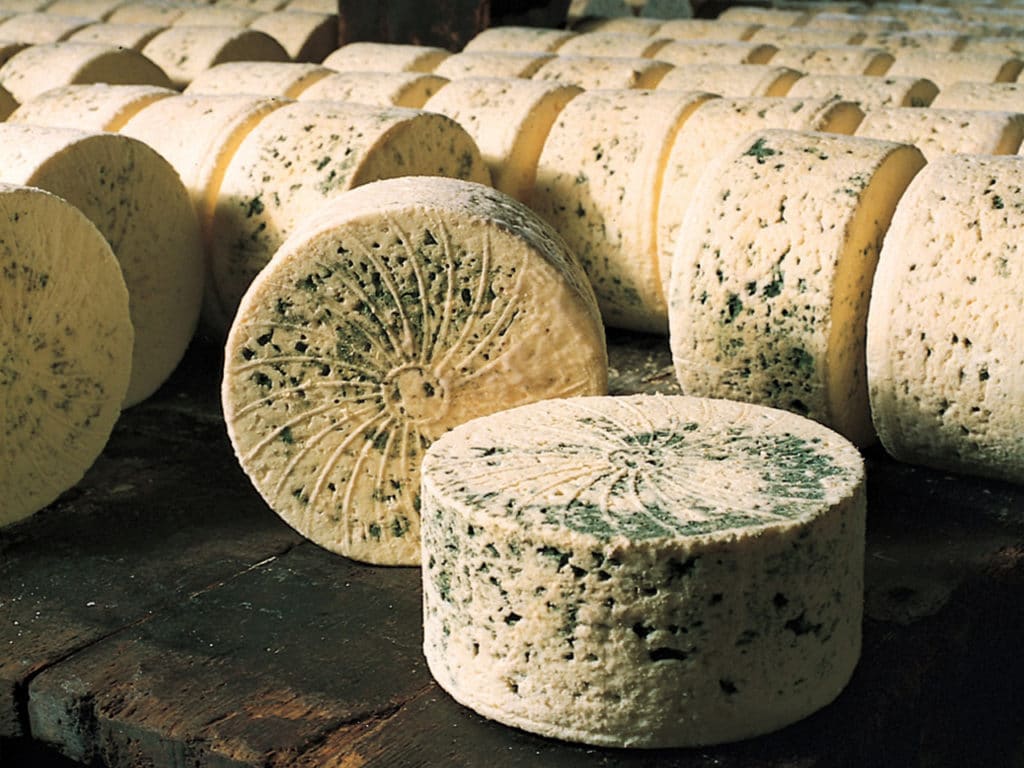
Stage 15 takes us to the medieval fortress city of Carcassonne. And the perfect traditional cheese to pair with this location is Bleu des Causses. The cheese draws its name from the region of the Grands Causses which are large natural limestone formations. In a similar way to another famous French blue cheese (which might be coming next), local affineurs mature wheels of Bleu des Causses in local natural caves.
Actually, the cheese owes a lot of its organoleptic qualities to the caves of the Gorges du Tarn. Bleu des Causses has a natural grey rind and an internal paste that is rich in blue veins and pockets. Furthermore, it has a sophisticated range of aromatic flavours which range from sweet to spicy.
Due to its soft texture, locals use this blue cheese extensively in cooking. Indeed, you can find Bleu des Causses in quiches, cakes, gratins and even some salad. If you’re wanting to pair it with wine, we’d recommend a sweet Moscato or a Côte de Bergerac.
Stage 16 – Carcassonne > Foix
Roquefort
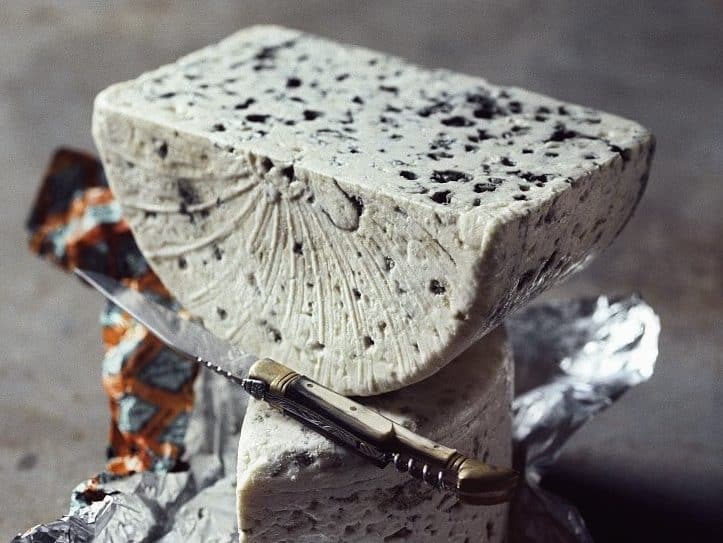
Next, we have the King of French Cheeses. Roquefort is a traditional sheep’s milk blue cheese made in the Aveyron department. Undoubtedly, it is one of the world’s best-known cheeses and dates back to at least the 15th century. The AOP dictates that this blue cheese can only be made in the Aveyron department. Furthermore, the wheels have to be matured in the natural Combalou caves of Roquefort-sur-Soulzon.
Roquefort has a moist velvety ivory paste that is mottled with delicate blue-green pockets and lines of mould. Your nose will be met with a tantalising aroma of forest undergrowth. Finally, the flavour is spicy on the front palate with a long grassy and salty finish.
Enjoy with a glass of Sauternes, stone fruit like peach or apricot and some honey. Serve on a French cheese platter with Brie de Meaux (more on that one once we reach Paris) and Beaufort.
Stage 17 – Saint-Gaudens > Peyragudes
Bethmale
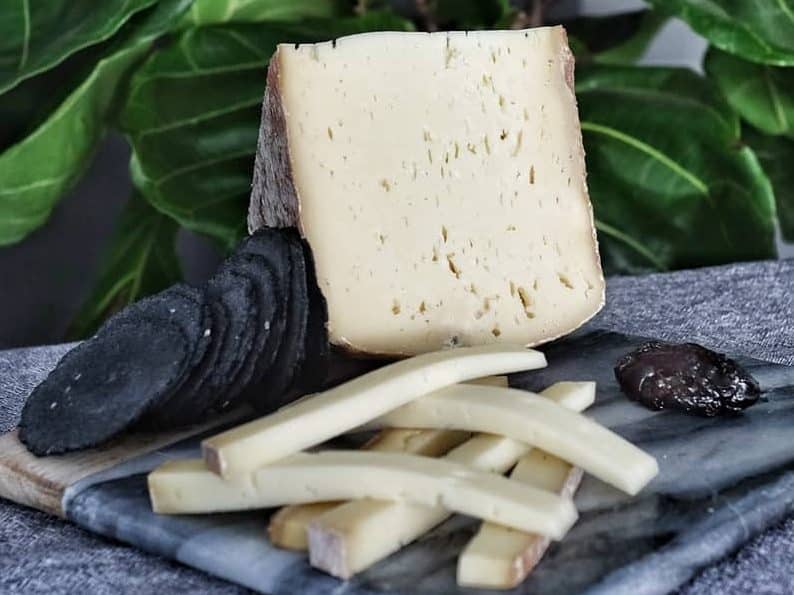
We have now made our way into the French Pyrénées and the traditional home of Bethmale. Local farmers have been making this traditional cheese with raw cow’s milk for generations and it is easily the region’s most famous cheese. As is often the case, the cheese draws its name from the valley where it was originally made, Bethmale Valley.
In total, the cheeses spend up to 4 months in the affinage rooms. During this time, the affineur regularly brushes the wheels with a brine solution which forms a sticky golden rind. Overall, the end product has a strong aroma and its earthiness will transport you to a farmyard in the mountains. Furthermore, its paste is peppered with horizontal slits and is soft and delectably unctuous. On the palate, this gorgeous cheese is yeasty and fruity and gets quite savoury near the rind.
The traditional pairing for this mountain cheese is a robust red wine like a Syrah or Grenache.
Stage 18 – Lourdes > Hautacam
Tomme de Chèvre des Pyrénées
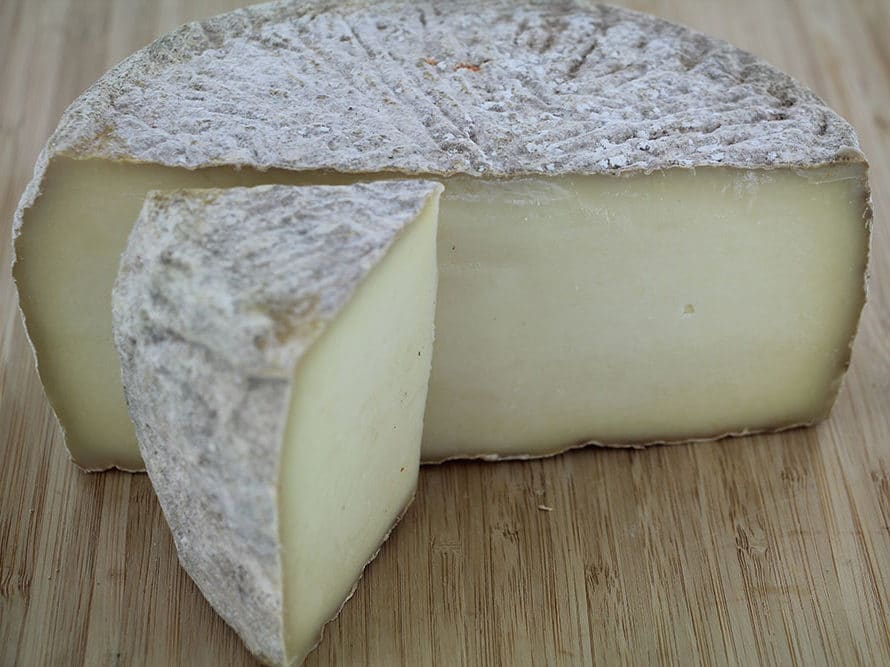
There are few cheeses that are more synonymous with the mountains than a good Tomme des Pyrénées. While there are versions made with cow’s and sheep’s milk, our pick for Stage 18 is Tomme de Chèvre des Pyrénées. As its name suggests, this pressed uncooked cheese is a goat’s milk version.
When mature, Tomme de Chèvre des Pyrénées is dense and solid, with a firm, white smooth, compact paste. The maker’s mark, a heart, is embossed on the rind. Overall, the cheese has a rich and complex flavour with tones of fruit, salt and citrus. Also, this Tomme has a delicious caramel, nutty finish that leaves you wanting more.
You will want to serve this beautiful goat’s cheese on a cheese board with plum or cherry paste and a glass of Syrah or Shiraz.
Stage 19 – Castelnau-Magnoac > Cahors
Ossau-Iraty
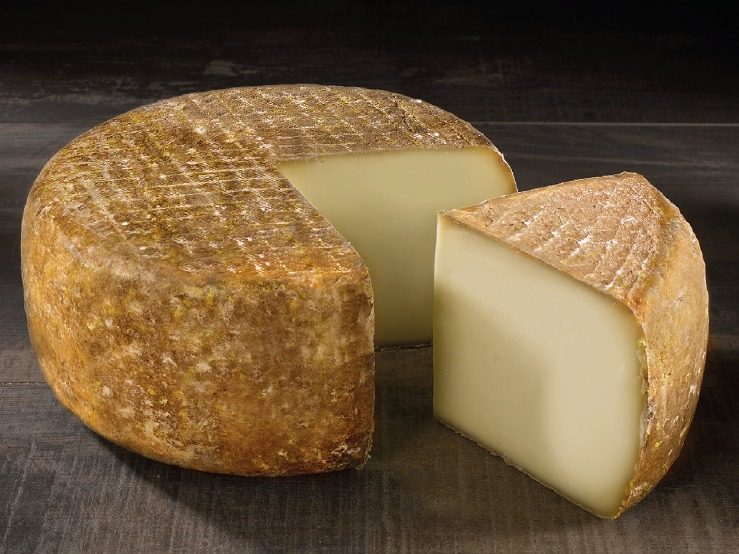
Stage 19 is our last in the mountains and takes us very close to the French Pays Basque. This historic region near the Spanish border is home to one of the world’s most spectacular mountain cheeses, Ossau-Iraty. Ossau-Iraty is a sheep’s milk cheese produced in a specific area of the French Pyrenées. The name is derived from the production area that includes two neighbouring provinces: the Ossau Valley, located in the Bearn and Iraty, a forested area in the French Basque Pyrénées.
This semi-hard beauty from the Pyrénées has a hay-coloured patchy rind and a pristine ivory paste. Its aroma is surprisingly buttery and sweet with a touch of barnyard. On the palate, you will detect notes of toasted wheat, roasted nuts, fresh grass and wildflowers. As the cheese ages, its creamy texture starts to become firm and calcium crystals start to appear. The flavour also tends to be more savoury.
The traditional Basque way to serve sheep’s milk cheese is to thinly slice the cheese. It is then served with a local Itxassou cherry paste and crunchy bread. It will also pair beautifully with a juicy Bordeaux, a robust Rhône or a tawny Port.
Stage 20 – Lacapelle-Marival > Rocamadour
Rocamadour
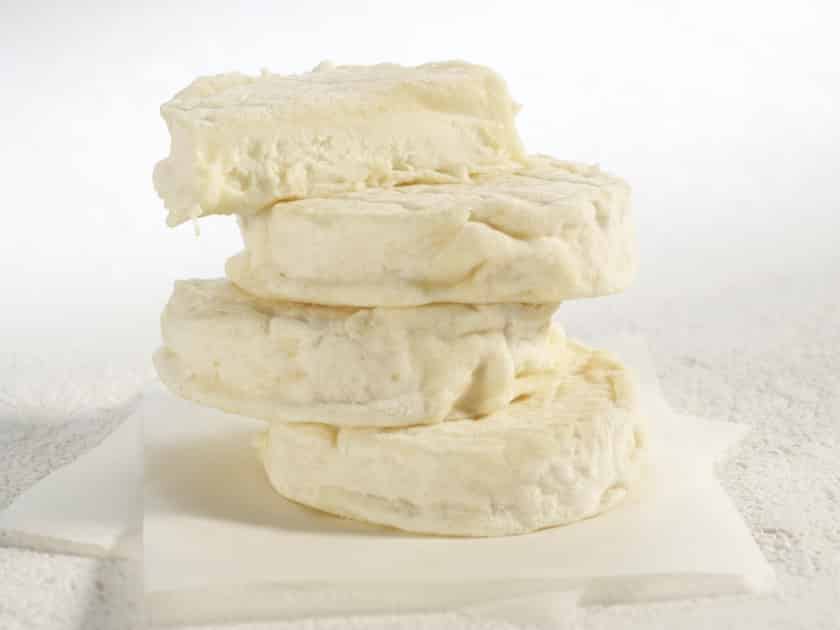
This year’s second last stage ends in a village that has actually given its name to a local cheese. Rocamadour (also called as Cabécou de Rocamadour or Cabécou de Gramat) belongs to a family of goat cheeses called Cabécous. It is produced in the regions of Périgord and Quercy, and gets its name from the village of Rocamadour in the department of the Lot.
At 6cm in diameter, Rocamadour is easily the smallest cheese on this list and you shouldn’t need more than two mouthfuls to finish it. With its delicate natural rind and soft paste, it might just tempt you into grabbing a second one. After 15 days of maturation, Rocamadour is still quite mild with a subtle goaty and citrus quality.
Because of its nutty flavour, it tastes great when spread generously on a warm crunchy baguette or in salads. Besides, it will pair really well with a local red wine.
Stage 21 – Paris La Défense Arena > Paris Champs-Élysées
Brie de Meaux
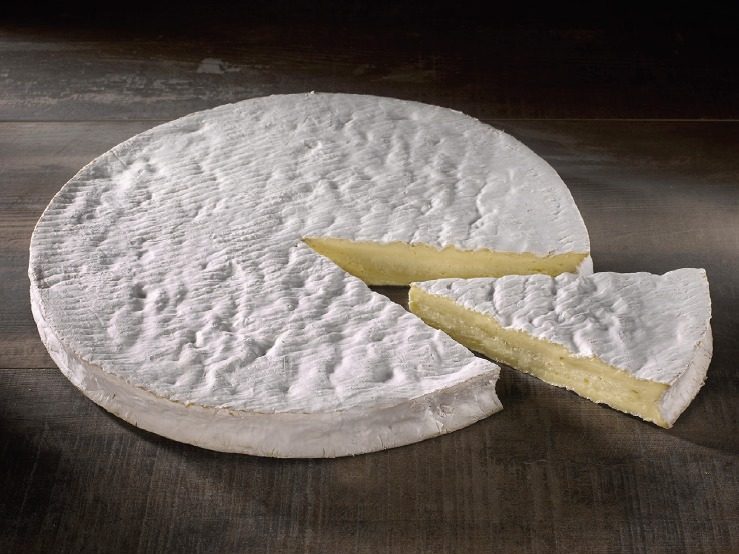
We are finally in Paris! While there are no cheesemakers in the capital, the greater Ile-de-France region is home to one of the country’s most famous cheeses, Brie de Meaux. Brie de Meaux is a traditional soft cheese that is made with raw cow’s milk within specified regions of Seine-et-Marne, Loiret, Aube, Marne, Haut-Marne, Meuse, and Yonne. Actually, that part of north-eastern France was historically known as Brie.
Furthermore, the cheese ripens from the surface towards the centre. As such, the best time to enjoy a Brie is when at least half the thickness is soft and creamy and the centre is still a bit firm and chalky. By this point, the paste has developed a distinct straw colour and is smooth and velvety at room temperature. On the palate, it is sweet and buttery with tantalising notes of mushrooms and almonds.
This wonderful soft cheese has so much depth of flavour that it can actually be served on its own. The rind is edible and is actually packed with flavour. So, don’t leave it behind! If you do want to add some pairings, a warm crunchy baguette is a good starting point.
COMPANION: Start planning your trip to Paris with this comprehensive travel guide →
Where will you be watching the Tour de France from this year?
Thank you for reading our cheese lover’s guide to the Tour de France 2022. Where will you be watching the tour from this year? Will you be on the side of the road? Or glued to your TV screen even at ungodly hours? Let me know in the comments.
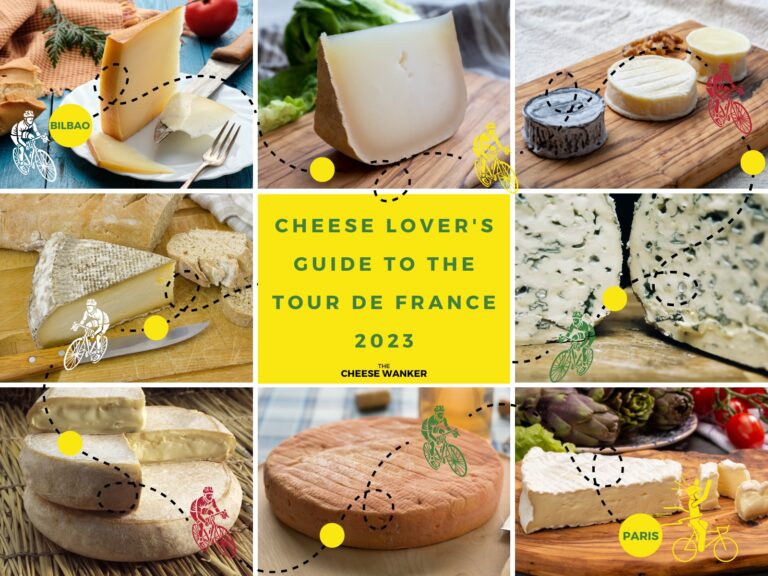
Le Tour is definitely an annual event for so many around the world. All along we enjoy the spectacular sceneries. Now that you have added descriptions of the different types of cheese by region makes things even more beautiful. A big thank you.